Relationship Quality by Age
At a recent LSSSE webinar, one insightful participant wondered whether the trend younger law students that we outlined in our recent annual report might be related to a corresponding ongoing decline in relationships with administrative staff. In this blog post, we will explore the relationship between law school student age and quality of their relationships with law school faculty and staff.
Law students generally enjoy satisfying relationships with others at their law school. LSSSE respondents are asked to rate their relationships with other students, law school faculty, and law school administrative staff on a 7-point scale. We consider a rating of 5 or higher to be a positive relationship. Typically, law students are most highly satisfied with their relationships with each other, followed by their relationships with faculty, and finally they tend to be least satisfied with relationships with law school staff.
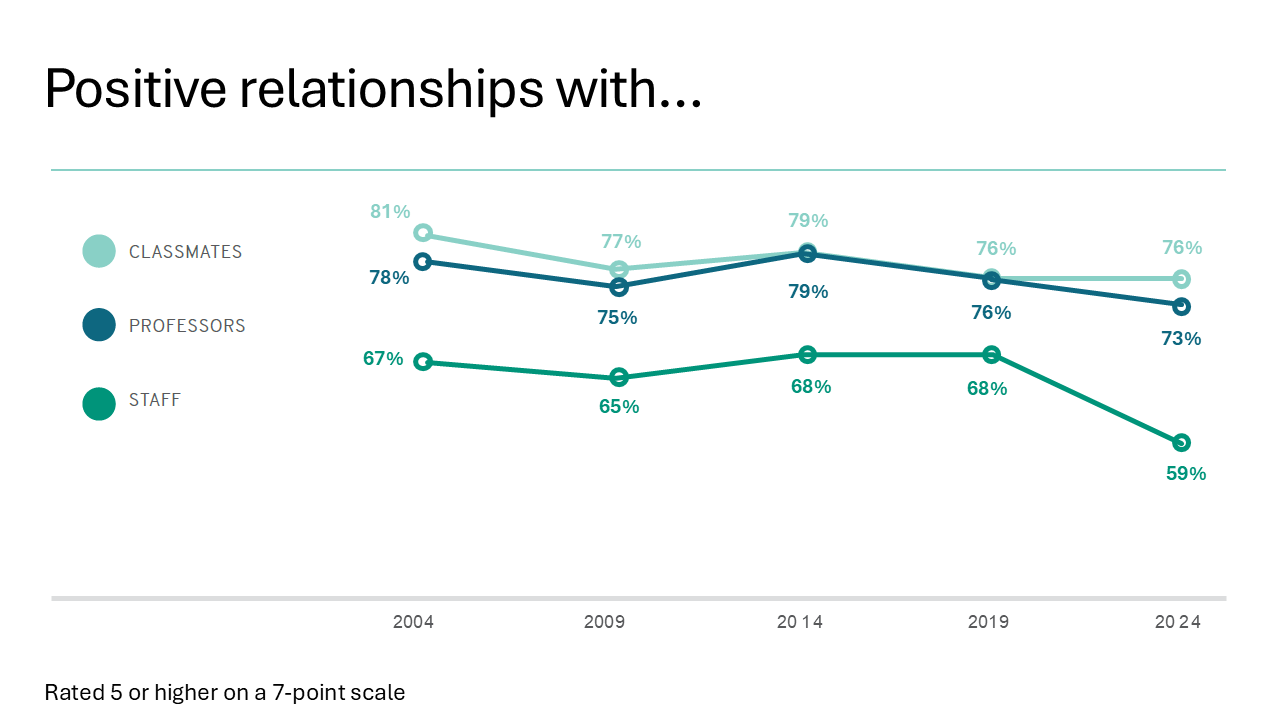
There is much less variability by age in the percentage of students with strong relationships with faculty compared to the percentage of students with strong relationships with staff. In other words, most students have strong relationships with faculty, but certain age groups of students are more likely to have strong relationships with staff than others. The hypothesis about student age and quality of relationships with staff seems to be mostly supported. The oldest students (those over age 40) are most likely to have strong relationships with administrative staff. Students in the 23-30 range are the least likely to have strong relationships with administrative staff, and students in their thirties fall in between. Most age groups have showed a decline in recent years, and it doesn’t appear that any age group has experienced a more precipitous decline than the others. The one notable exception is the youngest group of students—those under the age of 23. These students have been more likely to be satisfied with their relationships with staff in recent years, nearly reaching the same levels as the over 40 group in 2024.
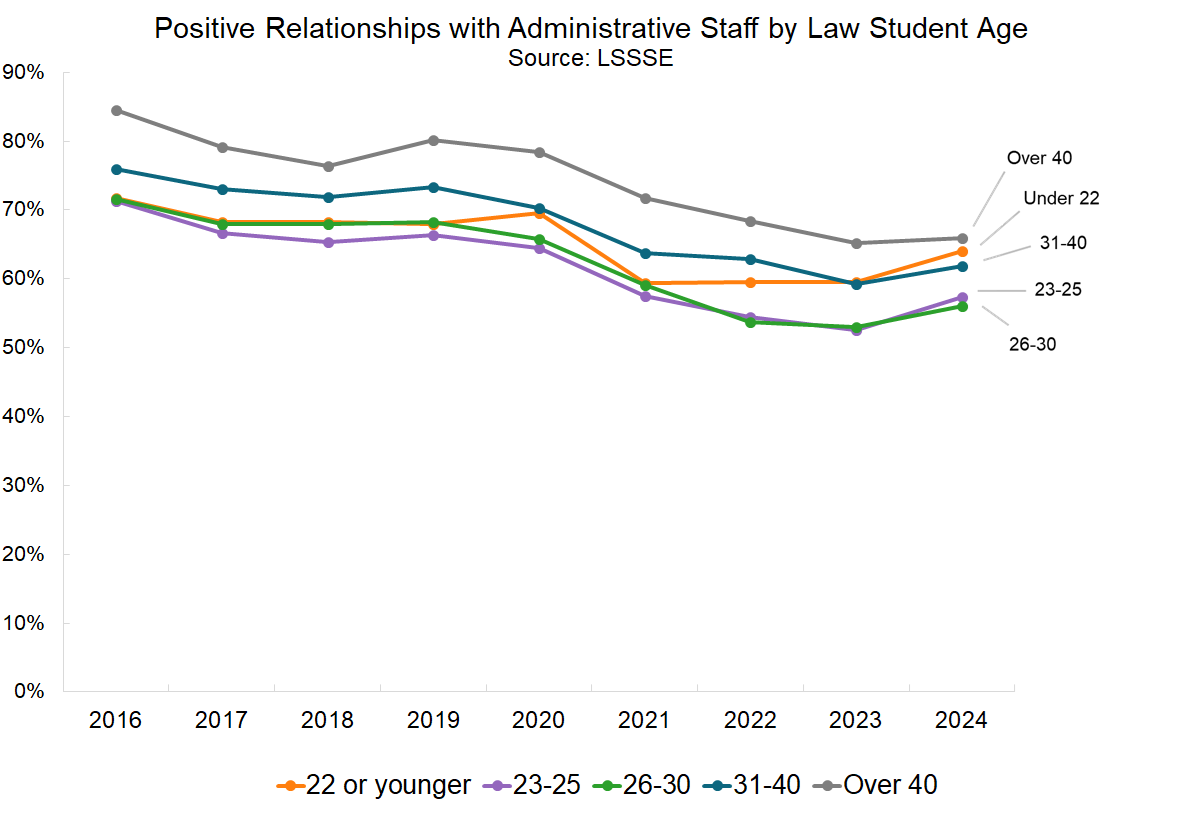
Overall, students are much more likely to have strong relationships with faculty than with administrative staff, which makes sense given that students are likely to work more closely with faculty and see them more often. However, parsing the relationship data by age shows the same general pattern: the oldest students are most likely to have strong relationships, the youngest students are the least likely, and the middle group falls somewhere in between. In this instance, the 22 and under group appears nearly indistinguishable from students in their thirties in recent years.
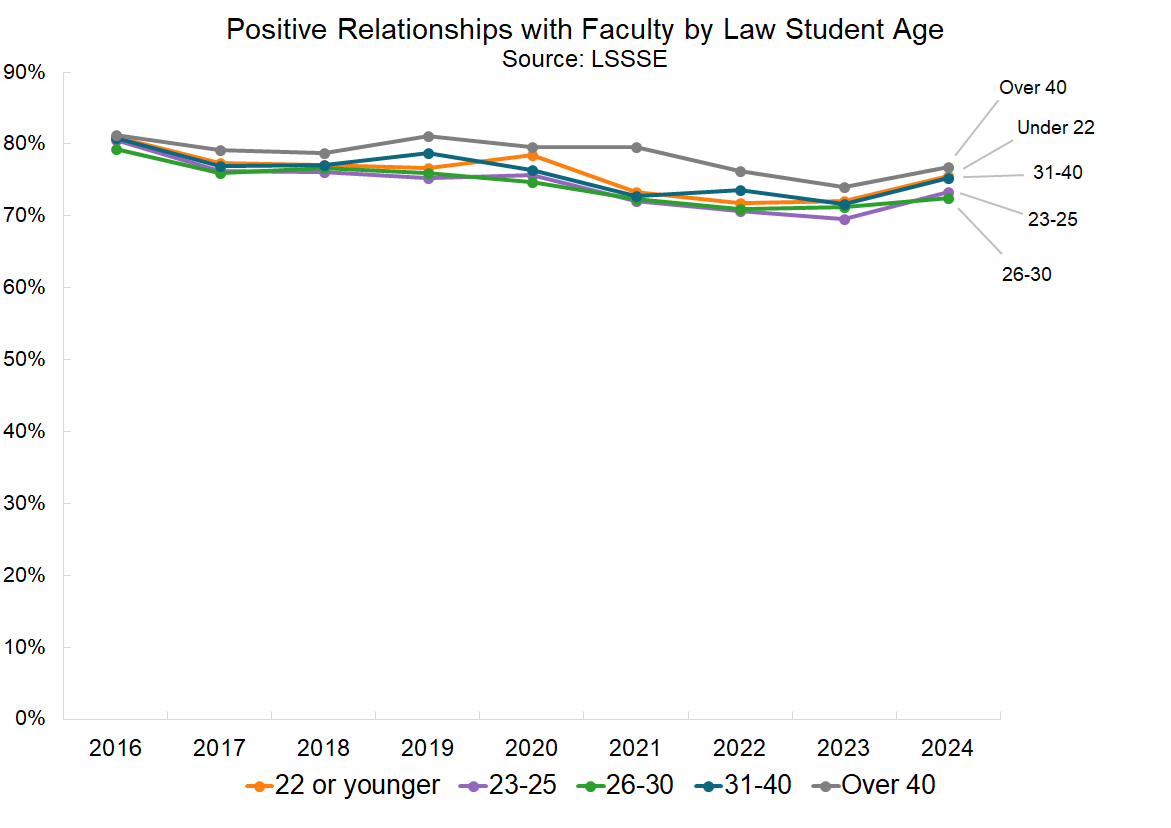
Age clearly matters at least to some degree when it comes to the quality of student/faculty and student/staff interactions. Older students tend to be satisfied with their relationships compared to younger students. This suggests that law schools might consider how they are facilitating the formation of these relationships and what tweaks might bring younger students into closer, more meaningful relationships with law school faculty and staff.
Online Learning and Law Student Age
The 2020-2021 academic year was unlike any other, forcing students and instructors to adapt to a different way of living and learning. Prior to the pandemic, law schools were less likely than other sectors of academia to embrace online learning. But when it became clear that COVID was not going away, many law schools shifted to primarily online interactions. The Online Learning module, which debuted with the spring 2021 LSSSE survey administration, was developed to capture students’ perceptions and experiences with online classes during this peculiar academic year and potentially beyond. Although the abruptness of the transition to online learning and the external stressors inherent to pandemic life may make these data unique in some ways, in other ways they are an excellent starting point for law schools to learn about how to structure their curriculum to leverage the strengths of the online environment, even as traditional in-person learning resumes.
What types of online learning experiences were law students having in 2020-2021? Nearly all students who took online courses had at least some synchronous element in their courses. Nearly two-thirds of students typically had synchronous courses while another third experienced a mixture of synchronous and asynchronous content. Only about two percent of students typically received only asynchronous content.
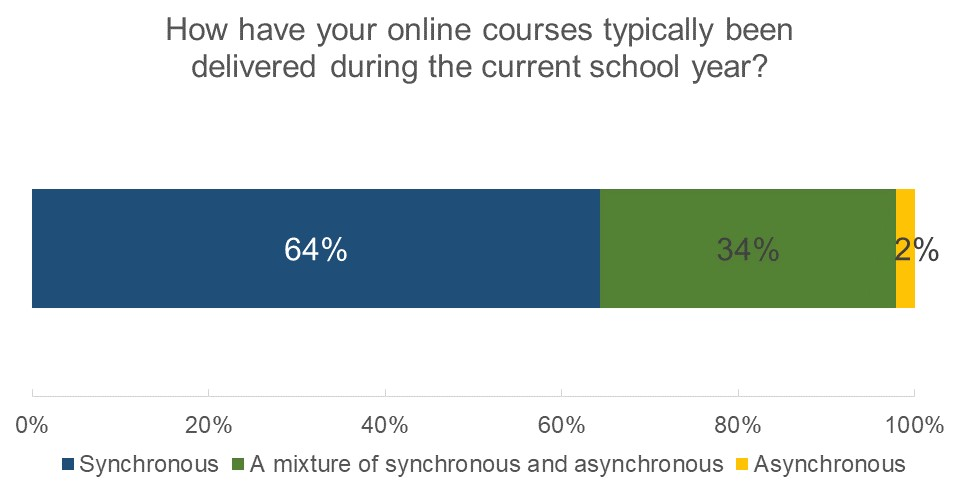
Most law students were fairly comfortable with online learning. Seventy percent of students were mostly comfortable or very comfortable interacting with the instructor of their online courses, and around 65% felt similarly about interacting with the other students. About two-thirds of students were comfortable with online discussion tools such as discussion boards and forums and about two-thirds of students were comfortable with live online course discussions.

Interestingly, older students were more likely to be comfortable with virtually all aspects of online learning relative to their younger peers. In fact, comfort with online learning tools increased steadily across age brackets. The vast majority (86%) of students over 40 were comfortable participating in live online discussions compared to only around 62% of students 25 or younger.

This age discrepancy in participation exists in physical classrooms too. In 2019, before the widespread adoption of online law classes, 80% of students over age 40 often or very often asked questions in class or contributed to class discussions, compared to 48% of those 22 or younger and 54% of those between 23 and 25. In fact, students under age 30 may be somewhat more comfortable with online course discussions than in-person ones, even though their overall participation is less than that of their older classmates regardless of the class setting.

Older students were also more likely to be comfortable interacting with their peers and instructors online. Only 63% of students age 22 or younger were comfortable interacting with their instructors online, compared to a full 85% of students over 40. Among students between the ages of 23 and 25 (the most common age for a law student), less than two-thirds were comfortable interacting with other students in their online classes, compared to a full 78% of students over 40.
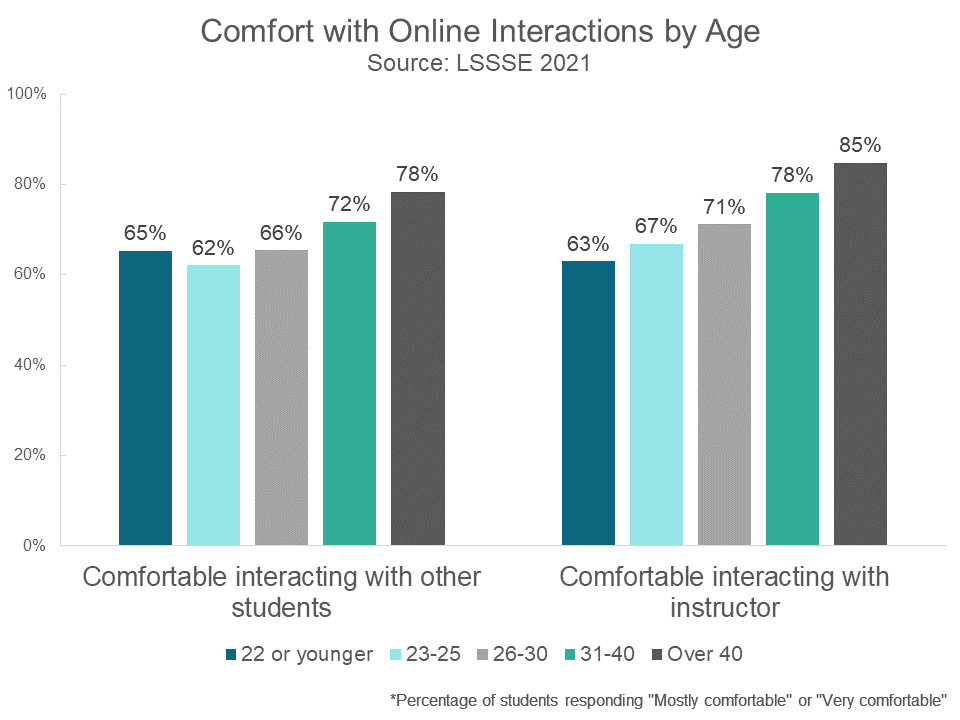
Although popular media tends to suggest that younger people are more adept with technology, the oldest Millennials – the first generation to live much of their lives online – are now in their forties. Perhaps these older students have adapted to so much online technology across their personal and professional lives that another pivot was not as disruptive as it was for their younger colleagues. Regardless of the reason, the LSSSE data show clearly that law schools should make a deliberate effort to support the technological skills and online engagement levels of their youngest students.


